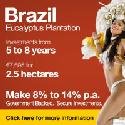
Time to practise the lessons of 2009
The last decade was not a good one for 'buy and hold' investors, but if you were an active and versatile trader you will hopefully be looking back on the period with some fondness.
The Dow Jones equity index fell 9%, recording the first negative decade since the 1930s. From 2000 to 2010 we had the dotcom collapse, the 2001 terrorist attacks on the US, and of course the credit crunch. It was a decade of immense volatility and hence opportunity.
Looking at the overall performance from 2000 to 2010 hides the fact that, over the ten years, the markets moved down 32%, then up 45%, then up another 31%, followed by the recent 53% collapse and subsequent 60% rally. Why succumb to the 'buy and hold' mentality when so much opportunity exists in more flexible approaches?
2010 will be a year when having the ability to go long (buy) or short (sell) the market is vital. We are not going to try to call the market play by play for 2010, because that is nigh on impossible, and because you need to approach the year with a flexible attitude. Instead, you should know what to look out for.
We do not believe the global economy is out of the woods yet. Consumers around the world still have massive debt. Huge numbers have lost their incomes or had them severely slashed, yet they own property in negative equity and a plethora of maxed-out credit cards. 2010 will probably be another year of tightening consumer spending and hence continued corporate revenue depression.
This is why we believe there will be a big fall-off in equities at some stage in the year. The risk-to-reward payoff from a long equity position at these levels is not large enough to warrant any significant long positions on the equities. In fact, dipping your feet into a small short trade may be the best way to start the year.
US aluminium giant Alcoa announces its 2009 Q4 earnings this week. As usual this marks the beginning of earnings season, and it should herald a return to more intense trading as market participants shake off the Christmas cobwebs. Good sales figures for Q4 could easily support a rally for the next few months, but any sign of weakness will be good cause to sell the equity indices, and if you are already short, maybe to get more aggressive.
A major factor in returning such a massive rally in 2009 was the record low interest rates in most parts of the world, making money extremely cheap and inflating asset prices. There is a real danger that central banks have gone too far in this respect, and instead of stabilising economies, they have simply created another dangerous bubble. Interest rates will not stay this low forever, and in the US, there is a strong probability that rates will start to rise towards the end of this year.
These factors will affect currency markets as well. Towards the end of 2009 we had some resurgence of the dollar. There is a growing belief that the US will raise rates before the Bank of England and ECB do, and as these belief grows stronger, so will the dollar. Adding to the attractiveness of the dollar is its much talked-about 'safe haven' status. If equity markets do tumble this year, then holding dollars should be a solid trading strategy.
2010 promises to be an interesting year in financial markets. Let's just hope that the extreme trading conditions of the past 10 years have taught investors plenty of lessons. Remember that, in the last nine months of 2009, those who were long the market made 60%. If you were a buy and hold investor you would have to have bought the Dow in 1996 to achieve the same nominal gains.
Commodities on the up
Christmas brought about a significant change in the direction of the oil market, with prices trading higher. This continued last week. On 23 December, US light crude broke above $76/bbl, the level we noted on 18 December as the turning point for higher oil prices. Since then US light crude has risen another 8% to above $83/bbl, a 52-week high.
This can't be attributed simply to technical factors. There is continued optimism that the global economic outlook is improving faster than expected. So for the time being, it looks likely that oil prices will continue to trade above $80 and dips to this level should be seen as opportunities to buy.
However, we remain sceptical about the sustainability of the recovery, and remain cautious on the upside for oil in the medium term.
Metals also made headway last week. Copper and platinum prices made 52-week highs. Gold also rallied strongly moving back above the $1,100/oz. However, if the dollar continues to strengthen, a fall in metal prices could happen very quickly.
Paddy Haran and Vinay Sharma, Delta Index



 del.icio.us
del.icio.us digg
digg Facebook
Facebook








